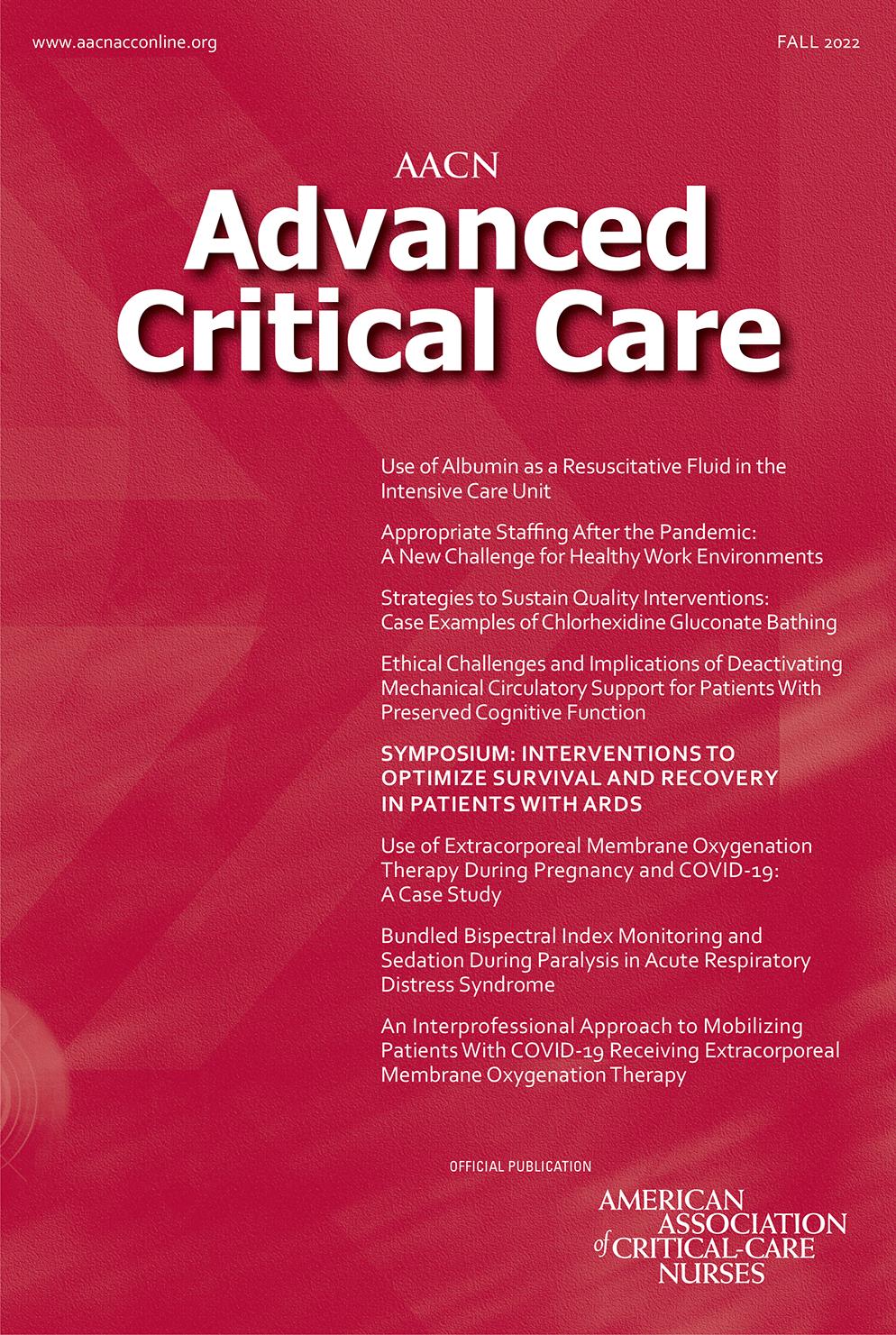AACN Advanced Critical Care

Fall 2022
Pages: 245-246
Topics: Pulmonary
Population: Adult
Journal Article
Symposium Introduction
Mary Fran Tracy, PhD, RN, APRN, CCNS, FCNS, FAAN
AACN Advanced Critical Care

Fall 2022
Pages: 245-246
Topics: Pulmonary
Population: Adult
Many adult patients in the intensive care unit (ICU) are either admitted with a primary pulmonary diagnosis or a diagnosis putting them at risk for developing a pulmonary complication. These pulmonary issues can quickly devolve into acute respiratory distress syndrome (ARDS). It has been estimated that 10% to 15% of ICU patients and up to 23% of those who are receiving mechanical ventilatory support meet criteria for ARDS,1 although ARDS is likely underrecognized and underreported.2
Our care of patients with ARDS has advanced immeasurably in the past several decades. Interventions include mechanical ventilation, sedation and paralysis, prone positioning, and extracorporeal membrane oxygenation (ECMO).3–5 Mortality from ARDS has been noted to be decreasing over the past 20 years.2 However, we still have much to learn about the direct management and supportive care we provide for these patients; there are still significant numbers of patients who are affected with long-term sequelae from ARDS, some of which may be a result of our interventions and treatments (ie, iatrogenic harm). For instance, mechanical ventilation itself can result in pulmonary damage5 and the overuse or underuse of sedation and pain medications and immobility may contribute to the development of muscle weakness and neuropsychiatric issues, sometimes lasting for months after ICU discharge.3